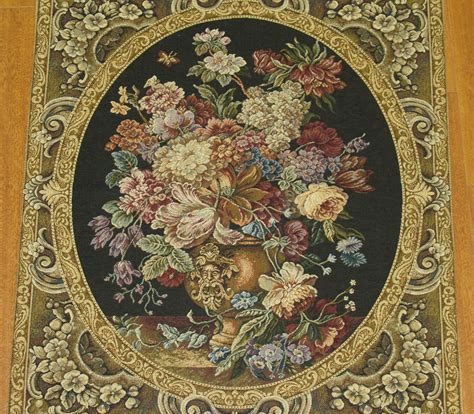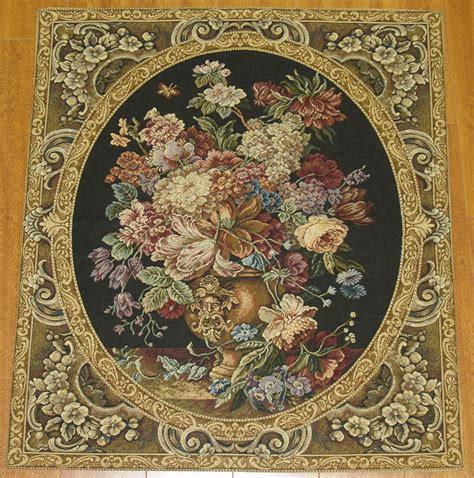

Tapestry is a form of textile art, traditionally woven on a vertical loom. It’s a beautiful way to add texture and color to any space!
Tapestry is a craft that has been around for centuries, dating back to ancient Egypt and Greece. Its intricate designs and colorful threads have captured the attention of artists and historians alike. However, in recent years, tapestry has experienced a revival in popularity among modern-day makers and decorators. With its ability to add texture and warmth to any space, tapestries are now a go-to décor element for many. But what makes tapestry so unique and why is it becoming a must-have in the world of interior design? Let’s delve into the fascinating history and modern-day uses of this timeless art form.
Daftar Isi
The Art of Tapestry
Tapestry is a form of textile art that has been around for centuries. It involves weaving threads together to create intricate designs and patterns. These tapestries have been used throughout history as decorative pieces, wall hangings, and even as a form of storytelling. Today, tapestry remains a popular form of art and can be found in homes, museums, and galleries around the world.
Ancient Origins
The art of tapestry can be traced back to ancient civilizations such as Egypt, Greece, and Rome. These early tapestries were made from a variety of materials including wool, silk, and cotton. They were often used as wall hangings or as coverings for furniture. Some were even used as floor coverings in palaces and castles.
Medieval Europe
Tapestry became popular in medieval Europe, particularly in France and Belgium. These tapestries were often commissioned by royalty and nobility and were used to decorate their castles and palaces. The designs often depicted scenes from history, mythology, or religion.
The Renaissance
During the Renaissance, tapestry became even more popular. The designs became more intricate and detailed, often featuring landscapes, animals, and portraits. Many of these tapestries were also used as a form of propaganda, with the designs promoting the power and wealth of the ruling class.
The Modern Era
In the modern era, tapestry has continued to evolve. Contemporary artists have experimented with new materials and techniques, creating tapestries that are both beautiful and innovative. Some artists have even used tapestry as a form of political or social commentary.
The Process of Making Tapestry
The process of making tapestry is a complex one. It involves weaving threads together on a loom to create a design. The weaver must carefully select the colors and textures of the threads to create the desired effect. The process can take weeks, months, or even years depending on the size and complexity of the tapestry.
Tapestry Around the World
Tapestry can be found in cultures around the world. In India, tapestries known as “durries” are made from cotton or wool and are often used as floor coverings. In South America, tapestries known as “arrazos” are made from alpaca or llama wool and are used as blankets or wall hangings. In Africa, tapestries made from raffia or other natural fibers are used as decorative pieces.
The Value of Tapestry
Tapestry is highly valued by collectors and art enthusiasts alike. Some tapestries have sold for millions of dollars at auction. The value of a tapestry depends on many factors, including the age, condition, and rarity of the piece. Some of the most valuable tapestries in the world can be found in museums and galleries, where they are admired by visitors from around the globe.
Tapestry in the Home
Tapestry can also be a beautiful addition to any home. A tapestry can add warmth, color, and texture to a room, and can be used as a focal point or to tie together different elements of a space. Whether you choose a traditional or contemporary design, a tapestry is sure to be a conversation piece and a treasured part of your decor.
The Future of Tapestry
The future of tapestry is bright. As artists continue to experiment with new techniques and materials, we can expect to see even more beautiful and innovative tapestries in the years to come. Whether in museums, galleries, or our own homes, tapestry will continue to be a treasured form of art for generations to come.
Tapestry weaving has a rich history that dates back to ancient civilizations such as Greece and Egypt. From the beginning, tapestries have been used for various purposes, ranging from decoration to commemoration and narration. Tapestry weaving involves an intricate design and technique that creates three-dimensional effects that capture the essence of the original artwork. Historically, tapestries often represented the beliefs, values, and social hierarchy of the time period and culture in which they were created. In the Middle Ages, tapestries were considered a luxury item that only the wealthy and elite could afford, making them a status symbol and a sign of wealth. Throughout history, famous artists such as Raphael, Leonardo da Vinci, and Michelangelo have included tapestries in their works of art, conveying important messages and holding symbolic meanings. The Arts and Crafts movement in the 19th and 20th centuries revived tapestry weaving, emphasizing the value of traditional craftsmanship and artistry. Tapestries continue to be popular in modern interior design, adding elegance, color, and texture to a room while reflecting the owner’s personal style and taste. There are many contemporary tapestry artists who continue to explore the possibilities of this ancient art form, showcasing a range of techniques, styles, and themes. Due to their historical and cultural significance, tapestries require special care and conservation to ensure their longevity. Tapestry exhibitions and museums around the world showcase the beauty and complexity of this art form, offering visitors the opportunity to experience the intricate details and rich history of tapestry weaving.Tapestry is a beautiful and intricate form of textile art that has been around for centuries. The art of tapestry involves weaving together threads to create stunning and detailed designs. However, like any art form, there are both pros and cons to creating and owning tapestries.Pros:1. Beauty: Tapestry can be absolutely stunning, with intricate designs and rich colors that can add warmth and beauty to any room.2. Durability: Tapestry is a durable material that can last for many years if properly cared for.3. Versatility: Tapestries can be used in a variety of ways, from wall hangings to tablecloths or even clothing.4. Historical Significance: Tapestry has a long and rich history, dating back to ancient times. Owning a tapestry can be a way to connect with history and tradition.Cons:1. Cost: Tapestry can be quite expensive, especially if you are looking for high-quality materials and intricate designs.2. Maintenance: Tapestries require regular maintenance to keep them clean and prevent damage from pests or moisture.3. Size and Weight: Tapestries can be quite large and heavy, making them difficult to move or install.4. Limited Use: While tapestries can be used in a variety of ways, they may not be suitable for every space or occasion.In conclusion, tapestry is a beautiful and timeless art form that can add warmth and beauty to any home. However, it is important to consider the pros and cons before investing in a tapestry, as it can be a significant investment in terms of both cost and maintenance.
The tapestry without title is a magnificent piece of art that has captured the attention of many art enthusiasts. Its beauty and intricate details are truly remarkable, making it a masterpiece that deserves to be appreciated by all. However, despite its popularity, the tapestry remains shrouded in mystery, with no one knowing who created it or what its original purpose was.
Despite the lack of information about the tapestry, many art experts believe that it was created in the Middle Ages. Its intricate designs and use of precious materials such as gold and silk suggest that it was a highly valued piece of art. Some also speculate that it may have been used as a religious artifact, possibly as an altar cloth or a backdrop for religious ceremonies. However, these theories remain unproven, and the true origins of the tapestry remain a mystery.
Despite the mystery surrounding the tapestry, its beauty and intricate details continue to captivate art enthusiasts around the world. It serves as a reminder of the incredible creativity and artistic talent of our ancestors, and a testament to the enduring power of art to inspire and delight us. Whether you are an art lover or just someone who appreciates beauty, the tapestry without title is definitely worth visiting and admiring.
Video tapestry
As a journalist, I have heard many questions about tapestries. Here are some of the most common ones:
What is a tapestry?
Simply put, a tapestry is a piece of decorative fabric that is woven by hand or machine. It often features intricate designs or scenes and is used as a wall hanging or furniture cover.
What materials are used to make tapestries?
The most common material used in tapestries is wool, but silk and cotton can also be used. Some tapestries even incorporate gold or silver threads for added embellishment.
What are some famous tapestries?
One of the most famous tapestries in the world is probably the Bayeux Tapestry, which depicts the events leading up to the Norman Conquest of England in 1066. Other notable tapestries include the Unicorn Tapestries at the Cloisters in New York City and The Lady and the Unicorn series at the Musée de Cluny in Paris.
How do you care for a tapestry?
- Keep it out of direct sunlight to prevent fading.
- Vacuum it regularly to remove dust and dirt.
- If necessary, spot clean with a mild detergent and water.
- Take it to a professional cleaner if it needs a deeper cleaning.
Are tapestries still popular today?
Yes! While tapestries may have been more common in medieval times, they are still a popular form of decoration today. Many people appreciate the intricate designs and historical significance of tapestries, and they can add a unique touch to any room.






